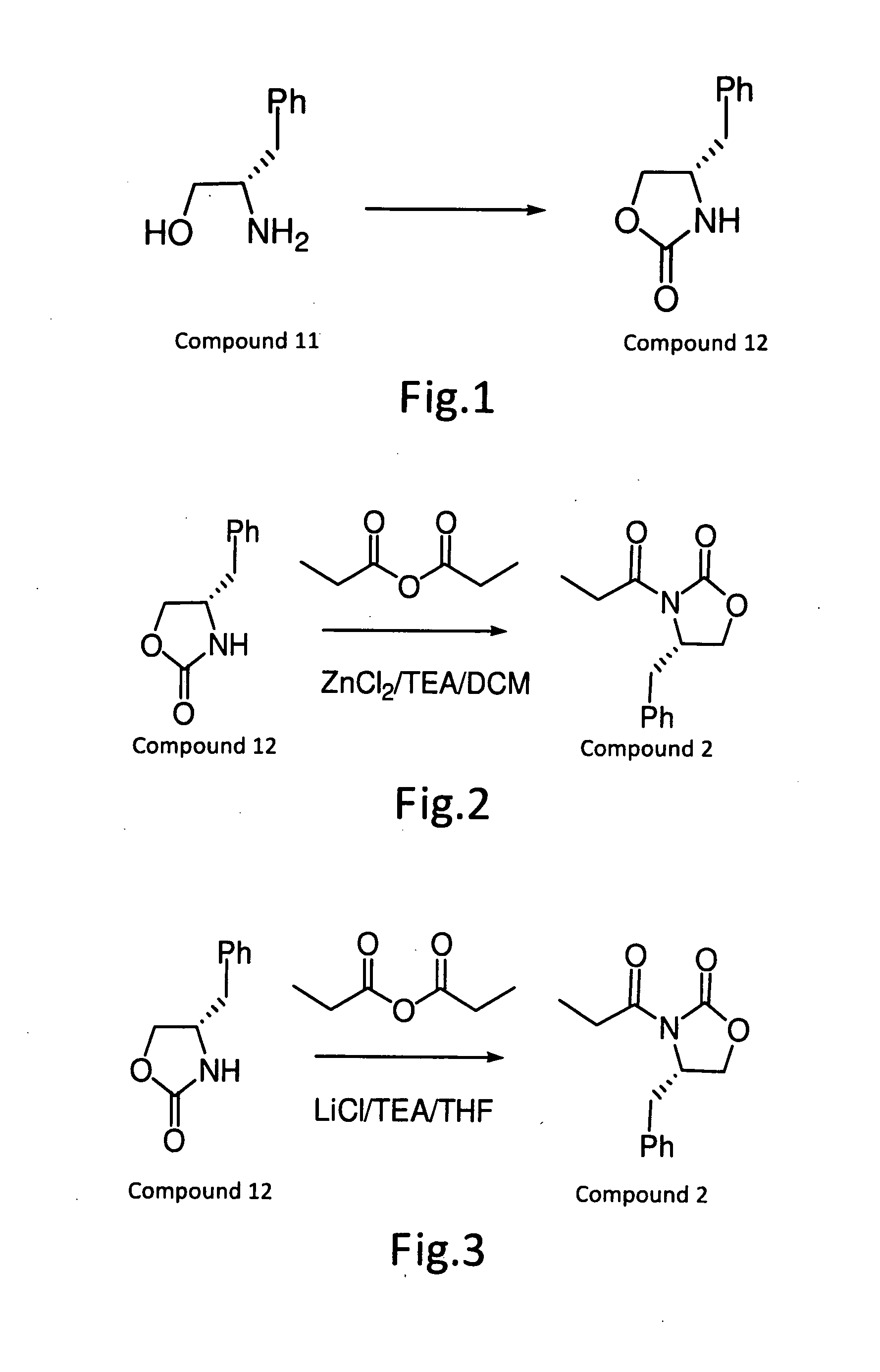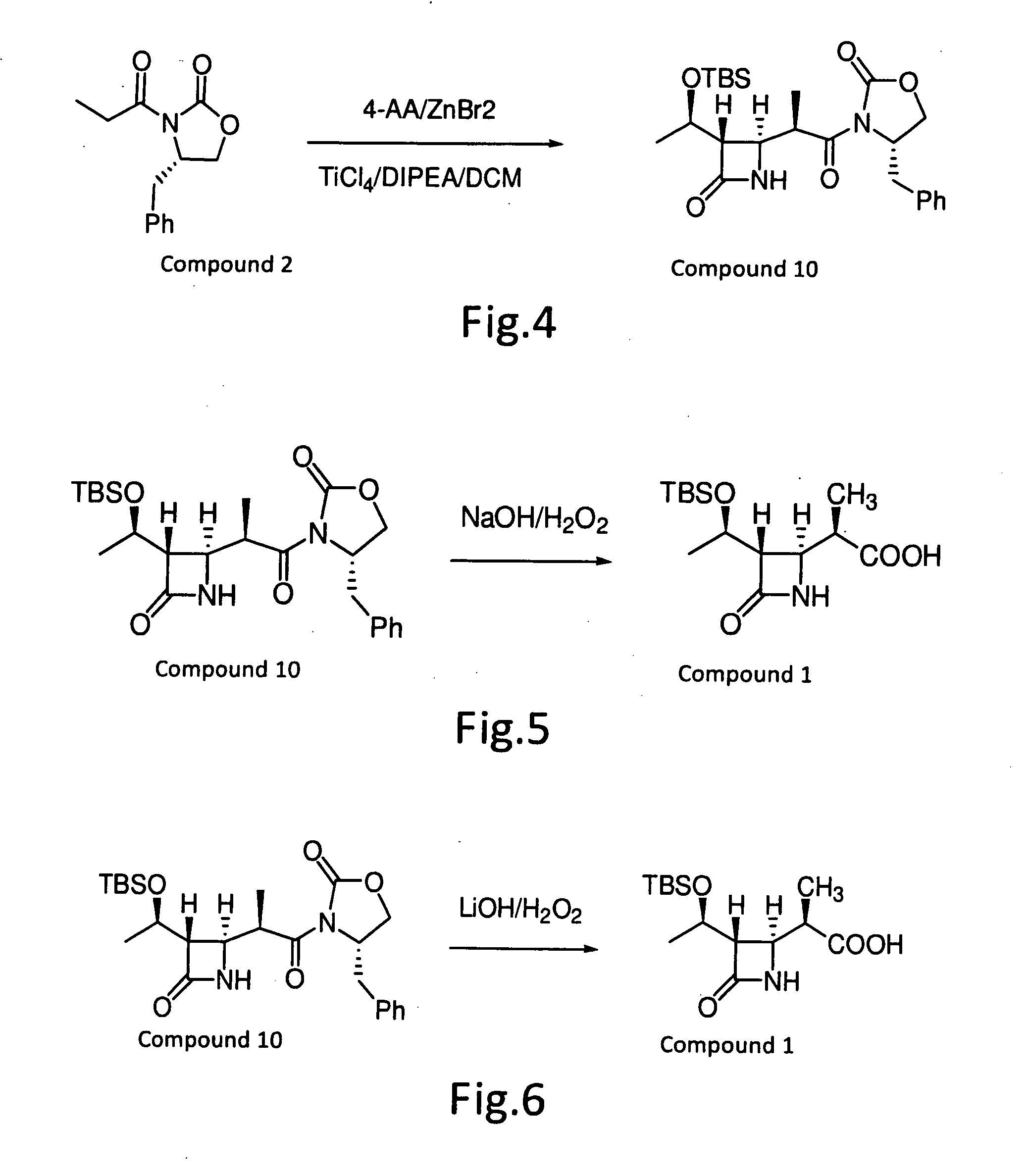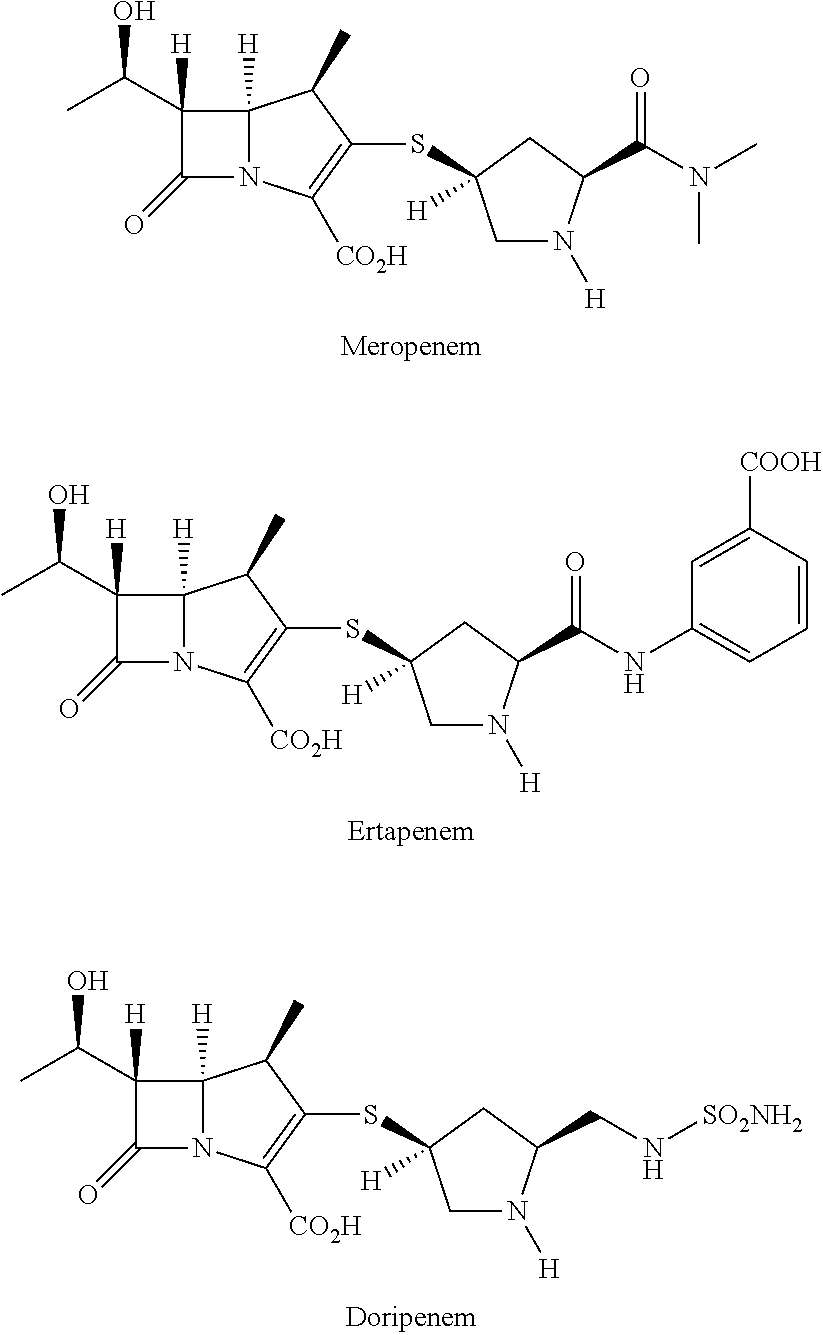Method for manufacturing stereoselective preparation of 4-BMA using a chiral auxiliary and chiral auxiliary
a technology of chiral auxiliary and stereoselective preparation, which is applied in the field of manufacturing methods of intermediates for the synthesis of penems or carbapenems, can solve the problems of uneconomic use and difficulty in industrial use, and achieve the effect of good quality of 4-bma
- Summary
- Abstract
- Description
- Claims
- Application Information
AI Technical Summary
Benefits of technology
Problems solved by technology
Method used
Image
Examples
example 1
Preparation of (S)-4-benzyloxazolidine-2-one-(2)
[0019]Refer to FIG. 1, to a mixture of (2S)-2-amino-3-phenyl-1-propanol (649 g; 4.29 mol) and diethyl carbonate (1040 ml; 8.58 mol), anhydrous potassium carbonate (20 g; 0.14 mol) was added, and the mixture was stirred at 120 to 130° C. for 3 hours. After cooling, to the resulting mixture 1N hydrochloric acid (1.5 L) and ethyl acetate (about 20 L) were added and stirred. The organic layer was separated and washed with brine. Distilling off the solvent under reduced pressure gave (4S)-4-benzyloxazolidin-2-one (760 g, quantitative yield) as a colorless solid. The sample for analysis obtained by recrystallization from a mixed solvent of cyclohexane and toluene (1:1). Colorless crystals. M.P., 88-89° C. [α]20d −63° (c=1.0 in CHC13); IR (KBr): 1751, 1710, 1408, 1246, 1020, 944, 760, 710, 618, 532; 1H-NMR (CDC13): δ7.33 (t, 3H), 7.26 (t, 1H), 7.16 (d, 2H), 5.39 (br, 1H), 4.44 (t, 1H), 4.14 (dd, 1H), 4.07 (m, 1H), 2.86 (d, 2H); (IR, bs), 7.29...
example 2a
Preparation of (S)-4-benzyl-3-propionyloxazolidine-2-one-(2)
[0020]Refer to FIG. 2, the compound (12) prepared in Example 1 (120 g) was dissolved in methane dichloride (984 ml), and cooled to 0° C. ZnCl2 (52 g) was added, triethylamine (101 g) was then added, and the resulting mixture was stirred over a 30 min. Propionic acid anhydride (96.9 g) was slowly added over a 30 min. time period. The reaction mixture was heated to reflux temperature and stirred for 1-1.5 hours. The reaction solution was cooled, water (300 ml) was added, and the mixture was stirred for 30 min. The methane dichloride phases were separated, and extracted once again with 1.5N hydrochloride solution (300 ml). The organic solution was washed once again with aqueous 5% sodium bicarbonate solution (240 ml). The organic solution was distilled by vacuum to remove methane dichloride until nothing come out. Heptanes was added to the resulting solution and stirred for 1 hours at −5 to 0° C., which was then filtered and d...
example 2b
Preparation of (S)-4-benzyl-3-propionyloxazolidine-2-one-(2)
[0022]Refer to FIG. 3, the compound (12) prepared in Example 1 (120 g) was dissolved in tetrahydrofuran (600 ml), and cooled to 0° C. Lithium chloride (33.3 g) was added, triethylamine (101 g) was then slowly added, and the resulting mixture was stirred for 30 min. Propionic acid anhydride (96.9 g) was slowly added over a 30 min. time period. The reaction mixture was slowly warmed to room temperature, and stirred for 1-1.5 hours. The reaction solution was cooled, 1N aqueous sodium chloride solution (300 ml) was added, and the mixture was stirred for 30 min. Ethyl acetate (300 ml) was added, the phases were separated, and extracted once again by ethyl acetate (300 ml). After washing with 1.5N hydrochloride solution (300 ml), the organic solution was washed once again with aqueous sodium chloride solution (240 ml). The ethyl acetate solution was distilled by vacuum to remove ethyl acetate until nothing come out. Heptanes was ...
PUM
| Property | Measurement | Unit |
|---|---|---|
| temperature | aaaaa | aaaaa |
| time | aaaaa | aaaaa |
| pH | aaaaa | aaaaa |
Abstract
Description
Claims
Application Information
 Login to View More
Login to View More - R&D
- Intellectual Property
- Life Sciences
- Materials
- Tech Scout
- Unparalleled Data Quality
- Higher Quality Content
- 60% Fewer Hallucinations
Browse by: Latest US Patents, China's latest patents, Technical Efficacy Thesaurus, Application Domain, Technology Topic, Popular Technical Reports.
© 2025 PatSnap. All rights reserved.Legal|Privacy policy|Modern Slavery Act Transparency Statement|Sitemap|About US| Contact US: help@patsnap.com



